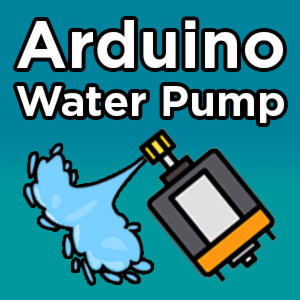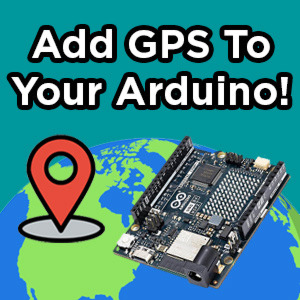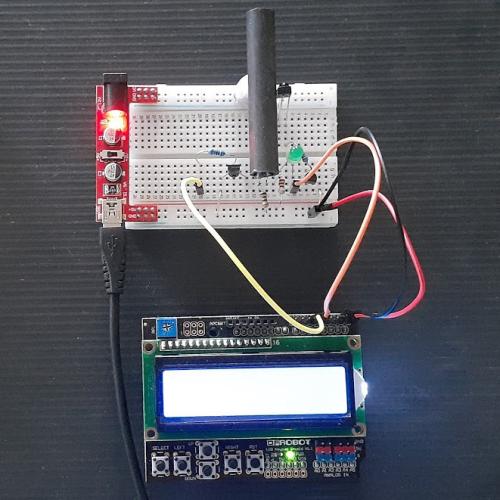Nano 33 BLE Sense Rev2 with Headers
In stock, ships same business day if ordered before 2PM
Delivered by Tue, 6th of Jan
Quantity Discounts:
- 5+ $64.15 (exc GST)
- 15+ $62.81 (exc GST)
This compact and reliable Nano board is built around the NINA B306 module for BLE and Bluetooth 5 communication; the module is based on Nordic nRF 52840 processor that contains a powerful Cortex M4F and the board has a rich set of sensors that allow the creation of innovative and highly interactive designs.
Its architecture, fully compatible with Arduino IDE Online and Offline, has a 9 axis Inertial Measurement Unit (IMU), temperature, pressure, humidity, light, color and even gestures sensors and a microphone that are managed through our specialized libraries. Its reduced power consumption, compared to other same size boards, together with the Nano form factor opens up a wide range of applications.
This allows the design of wearable devices and gesture based projects that need to communicate to other devices at a close range. Arduino Nano 33 BLE Sense is ideal for interactive automation projects thanks to the multiprotocol BT 5.0 radio.
Technical Specifications
Dimensions: 44mm x 18mm x 4.2mm
This board is based on the nRF52840 microcontroller.
| Clock | 64MHz |
| Flash | 1MB |
| RAM | 256KB |
Please note: Arduino Nano 33 BLE Sense only supports 3.3V I/Os and is NOT 5V tolerant so please make sure you are not directly connecting 5V signals to this board or it will be damaged. Also, as opposed to Arduino Nano boards that support 5V operation, the 5V pin does NOT supply voltage but is rather connected, through a jumper, to the USB power input.
To avoid such risk with existing projects, where you should be able to pull out a Nano and replace it with the new Nano 33 BLE Sense, we have the 5V pin on the header, positioned between RST and A7 that is not connected as the default factory setting. This means that if you have a design that takes 5V from that pin, it won’t work immediately, as a precaution we put in place to draw your attention to the 3.3V compliance on digital and analog inputs.
5V on that pin is available only when two conditions are met: you make a solder bridge on the two pads marked as VUSB and you power the NANO 33 IoT through the USB port. If you power the board from the VIN pin, you won’t get any regulated 5V and therefore even if you do the solder bridge, nothing will come out of that 5V pin. The 3.3V, on the other hand, is always available and supports enough current to drive your sensors. Please make your designs so that sensors and actuators are driven with 3.3V and work with 3.3V digital IO levels. 5V is now an option for many modules and 3.3V is becoming the standard voltage for electronic ICs.
The Bluetooth is managed by a NINA B306 module.
IMUs (BMI270 - 6 axis IMU and BMM150 - 3 axis IMU).
The LPS22HB reads barometric pressure.
Temperature and humidity sensor HS3003.
The ADPS-9960 is a digital proximity, ambient light, RGB and gesture sensor.
The MP34DT05 is the digital microphone
Crypto keys are managed by the ATECC608A crypto chip.
The board has a two 15 pins connectors - one on each side -, pin to pin compatible with the original Arduino Nano.
| Pin | Funcion | Type | Description |
| 1 | D13 | Digital | GPIO |
| 2 | +3V3 | Power Out | Internally generated power output to external devices |
| 3 | AREF | Analog | Analog Reference; can be used as GPIO |
| 4 | A0/DAC0 | Analog | ADC in/DAC out; can be used as GPIO |
| 5 | A1 | Analog | ADC in; can be used as GPIO |
| 6 | A2 | Analog | ADC in; can be used as GPIO |
| 7 | A3 | Analog | ADC in; can be used as GPIO |
| 8 | A4/SDA | Analog | ADC in; I2C SDA; Can be used as GPIO (*) |
| 9 | A5/SCL | Analog | ADC in; I2C SCL; Can be used as GPIO(*) |
| 10 | A6 | Analog | ADC in; can be used as GPIO |
| 11 | A7 | Analog | ADC in; can be used as GPIO |
| 12 | VUSB | Power In/Out | Normally NC; can be connected to VUSB pin of the USB connector by shorting a jumper |
| 13 | RST | Digital In | Active low reset input (duplicate of pin 18) |
| 14 | GND | Power | Power Ground |
| 15 | VIN | Power In | Vin Power input |
| 16 | TX | Digita | USART TX; can be used as GPIO |
| 17 | RX | Digital | USART RX; can be used as GPIO |
| 18 | RST | Digital | Active low reset input (duplicate of pin 13) |
| 19 | GND | Power | Power Ground |
| 20 | D2 | Digital | GPIO |
| 21 | D3/PWM | Digital | GPIO; can be used as PWM |
| 22 | D4 | Digital | GPIO |
| 23 | D5/PWM | Digital | GPIO; can be used as PWM |
| 24 | D6/PWM | Digital | GPIO; can be used as PWM |
| 25 | D7 | Digital | GPIO |
| 26 | D8 | Digital | GPIO |
| 27 | D9/PWM | Digital | GPIO; can be used as PWM |
| 28 | D10/PWM | Digital | GPIO; can be used as PWM |
| 29 | D11/MOSI | Digital | SPI MOSI; can be used as GPIO |
| 30 | D12/MISO | Digital | SPI MISO; can be used as GPIO |
(*) As opposed to other Arduino Nano boards, pins A4 and A5 have an internal pull up and default to be used as an I2C Bus so usage as analog inputs is not recommended. Opposed to Arduino Nano boards that support 5V operation, the 5V pin does NOT supply voltage but is rather connected, through a jumper, to the USB power input.
On the bottom side of the board, under the communication module, debug signals are arranged as 3x2 test pads with 100 mil pitch. Pin 1 is the bottom left one with the USB connector on the left and the test pads on the right. This board comes with 2 rows of header pins included.
| Pin | Function | Type | Description |
| 1 | +3V3 | Power Out | Internally generated power output to be used as voltage reference |
| 2 | SWD | Digital | nRF52480 Single Wire Debug Data |
| 3 | SWCLK | Digital In | nRF52480 Single Wire Debug Clock |
| 5 | GND | Power | Power Ground |
| 6 | RST | Digital In | Active low reset input |
Documents
Changelog:
- Replacement of IMU from LSM9DS1 (9 axis) for a combination of two
IMUs (BMI270 - 6 axis IMU and BMM150 - 3 axis IMU). - Replacement of temperature and humidity sensor from HTS221 for
HS3003. - Replacement of power supply MPM3610 for MP2322.
- Addition of VUSB soldering jumper on the top side of the board.
- New test point for USB, SWDIO and SWCLK.
DO I NEED TO CHANGE MY SKETCH USE IN THE PREVIOUS REVISION?
For sketches done using the libraries like LSM9DS1 for the IMU or HTS221 for the temperature and humidity sensor, for the new revision this libraries must be changed to Arduino_BMI270_BMM150 for the new combined IMU and Arduino_HS300x for the new temperature and humidity sensor.
Exact shipping can be calculated on the view cart page (no login required).
Products that weigh more than 0.5 KG may cost more than what's shown (for example, test equipment, machines, >500mL liquids, etc).
We deliver Australia-wide with these options (depends on the final destination - you can get a quote on the view cart page):
- $3+ for Stamped Mail (typically 10+ business days, not tracked, only available on selected small items)
- $7+ for Standard Post (typically 6+ business days, tracked)
- $11+ for Express Post (typically 2+ business days, tracked)
- Pickup - Free! Only available to customers who live in the Newcastle region (must order online and only pickup after we email to notify you the order is ready). Orders placed after 2PM may not be ready until the following business day.
Non-metro addresses in WA, NT, SA & TAS can take 2+ days in addition to the above information.
Some batteries (such as LiPo) can't be shipped by Air. During checkout, Express Post and International Methods will not be an option if you have that type of battery in your shopping cart.
International Orders - the following rates are for New Zealand and will vary for other countries:
- $12+ for Pack and Track (3+ days, tracked)
- $16+ for Express International (2-5 days, tracked)
If you order lots of gear, the postage amount will increase based on the weight of your order.
Our physical address (here's a PDF which includes other key business details):
40 Aruma Place
Cardiff
NSW, 2285
Australia
Take a look at our customer service page if you have other questions such as "do we do purchase orders" (yes!) or "are prices GST inclusive" (yes they are!). We're here to help - get in touch with us to talk shop.
Have a product question? We're here to help!
Videos
View AllGuides
How to Control a Water Pump with an Arduino
How to add GPS to Your Arduino | Add Real-Time Location to Your Project!
C Programming for Makers
The Maker Revolution
Projects
IR Break-Beam Stopwatch
Coffee Grinder With Arduino
The Hipster Coaster
Educational Workshops
Arduino Workshop for Beginners
Makers love reviews as much as you do, please follow this link to review the products you have purchased.






















Product Comments